HATE: The Board Game officially launches on Kickstarter tomorrow, but CMON has slowly been releasing teasers and tidbits for months now. Due to the mature nature of the content, the entire game will be Kickstarter-exclusive and will not go to retail. As the anticipation continues to build, let’s take a look at everything that’s been released so far.

HATE is originally based on The Chronicles of Hate, which is a series of graphic novels by Adrian Smith published in 2014. Smith did freelance artwork for CMON on titles such as Blood Rage, The Others, Rising Sun, and Zombicide before finally accepting a Lead Artist position in March 2017. Upon joining he was working on several titles including HATE: The Board Game.

Gen Con 2017 marked the first public showing of HATE miniatures. Their level of detail was quite astonishing, and garnered quite a bit of interest. An interview with Eric Lang was also recorded detailing some of the first game-play hints.
HATE is set in a post-apocalyptic world where the only way to survive is to hate. The core game is 2 player, but can support up to 4 players and is played over a series of Chronicles. “Chronicle” is used rather than “campaign” because it entails multiple games that are connected, and not everyone has to be involved in every game. Most of the miniatures in the game are 32mm, but the Prince figures are substantially larger, standing tall at 72mm!

Players each control a group of survivors known as a Tribe. Tribes are composed of 11 like-minded members with varying roles who will evolve and change (for better or worse) as a Chronicle plays out. There are 4 types of tribes, each with their own theme/mechanic:
- Um’Cal – Berserkers who are fueled by fallen comrades even if occasionally self inflicted.
- Um’Gra – Very reckless, highly offensive, spare no thought for defense.
- Um’Kator – Highly adaptable and flexible. They are masters of dice manipulation and deck cycling.
- Um’Rak – Teamwork oriented, formation-based group attacks activating multiple figures at once.
There are 5 basic roles that tribe members can take, each with their own unique set of skills. An individual character’s card is stored sleeved, and as they progress new transparent cards representing abilities or scars will also be added in the sleeve.
- Champion Warrior – The strongest, and most veteran warrior.
- Prince – Extra durable and takes a concentrated effort to kill. “The strong devour the weak, growing in strength and size.”
- Shaman – Assists other members with support and spiritual inspiration.
- Warrior – The main fighting unit whose strength and skills are developed over time. Can earn bonuses based on their battlefield position.
- Young Blood – Largely ranged units, being close enough to “experience” the battle, but stay out of harm’s way.
Each tribe lives in a Village, which is large enough to defend against some outside threats, but small enough that it can be left behind. Villages, like its members, can grow and develop over time and is useful for many things before, during, and after Clashes. They are comprised of multiple buildings:
- Chiurgeon – Heal scars from injured Tribe members.
- Forge – Useful for applying short-term “buffs” to Tribe members during battle.
- Hall of Heroes – Filled with stories of breathtaking victories and glorious deaths, helping to inspire tribe members and recruit mercenaries.
- Oven – Convert fallen enemies into resources for the Tribe.
- Shaman’s Hut – Allows players to have more control over the flow of cards from the Tribe deck.
- Torture Pit – Convert enemy Tribe members into Hate, perhaps the main currency of the game.
- Training Grounds – Allows players to teach characters new abilities. Each character has slots for four different skills or scars.

Besides their normal Tribe members, players can potentially gain recruits from outside From time to time, Mercenaries will appear and may join the Tribe after a little convincing. These lone wolves each come with their own pre-established skills and abilities, which could quickly boost your team. Nothing is free however, in order to add a Mercenary players must first “make room” by sacrificing an existing Tribe member.
So, what is the point of all of this? The goal of the game is ultimately to earn Conquest points by controlling Territories and completing objectives. At the end of a Chronicle, made up of many clashes, these Conquest points will be added to the lower amount of each player’s either Hate or Resources to produce the final score. As such, one Tribe will reign supreme, and the rest will be subjugated or killed.

As shown above, each Clash is a one-on-one brawl. The aggressing Tribe selects a Scenario for the battle, and the battlefield is setup accordingly with a variety of Terrain including Hills, Huts, Trees, and Interest Tokens. Each scenario has it’s own rules and goals which consist of Side Missions and Main Missions, each with it’s own name, objective, and reward. The details of battle are detailed below, but one thing is certain: be sure to protect your fallen comrades! If knocked down, Tribe members can be captured by the opponent and dragged back to their village. If this happens, the captor will cook or torture the poor soul to generate resources or Hate. The loss is permanent, and the owner will have to start a new character entirely from scratch. Here is a snippet of how battle works, check the original article for the full details.
Battles are fought over four rounds, with turns alternating back and forth. Players spend Savagery Tokens (the main currency in the game) to activate Tribe members, use skills, take advantage of Tribe cards, or use Forge abilities. Rounds continue until one player is out of Savagery Tokens or one player has completed all the victory conditions for the Scenario, claiming a win.
During a round, players will have access to two of their Tribe cards, which are placed face up on the table. They can be used only once and even if they’re not used they’re discarded at the end of the round. Each Tribe card has a Trigger which indicates when it can be used and a cost in Savagery Tokens to activate it. Savagery Tokens can also be spent in the Village at the Forge to get immediate benefits such as extra Movement, extra dice when Attacking or Defending, and extra Activations.
Battles are broken up into Replenish Phases and Activation Phases. During the Replenish Phase, players reset, removing spent Savagery Tokens from Tribe cards or their Forge, discarding unused Tribe cards and Savagery Tokens, gaining five new Savagery Tokens, and drawing two new Tribe cards. During the Activation Phase, players can activate Tribe members to kill enemies, move around the board, chop down Trees for resources, pillage Huts for Resources and rewards, drag KO’d opponents back to their Village, and work to complete Missions.
In a world where killing is more of a hobby than anything else, players can expect to do a lot of Attacking in HATE. The aggressing Tribe member has an Attacking Value, which can be altered with things like Tribe cards and upgrades. They gather dice equal to their total and roll, looking for Swords (Attack Success), Wilds, or Skulls (which earn Savagery Tokens). Defenders have their own Defense Value marked on the Tribe member card and can manipulated that with Tribe cards and upgrades among other things. Defenders get a chance to roll as well. In their case, the result of a Shield is a successful defense. Both the Attacker and Defender can receive Support in the form of extra dice from Tribe members in adjacent spaces. It can pay to move together as a group over the battlefield.
If the Attacker generates more Swords than the Defender did Shields, the Defender has been KO’d and become a body on the field of battle. They’ll lie their gasping for breath and clinging to life, until the end of the Scenario…or until they are dragged off to a much worse fate.
As soon as a Battle ends there is an Intermission, where players return to their Village to catch their breath, plan for the next round, and cook and torture their captives. Torturing enemies in the Pit earns Hate for players and cooking them in the oven and feasting on their flesh earns them Resources. Never go into battle on an empty stomach! If a Tribe member is tortured or eaten, they are lost to their Tribe forever, but there is only so much space in the Oven and Torture Pit, and if there are not enough slots for the captives, they escape back to their home Village. If you lost a Tribe member to the Oven or the Pit, all of their Upgrades are gone and you’ll have to start over with a new character from scratch. Fresh meat for the grinder.
During the Intermission, players also roll for Scars, assigning them to any of their Tribe members that have been KO’d during battle. They can also visit the Chiurgeon to get scars removed. The Intermission is a period of recovery and reflection for those that made it safely back to their own Village. It is a time of torture and death for those not so lucky.
When the Intermission is done, it’s time for the second Battle in the Clash. The roles are reversed with the Defending Tribe becoming the Attacker. They will go through the same steps again, choosing a Territory to assault and a Scenario to play. The same steps are repeated until a victor is determined in the second Battle, bringing the Clash to an end. Players are awarded Conquest points, and the Chronicle will continue until all of the Clashes have been played.

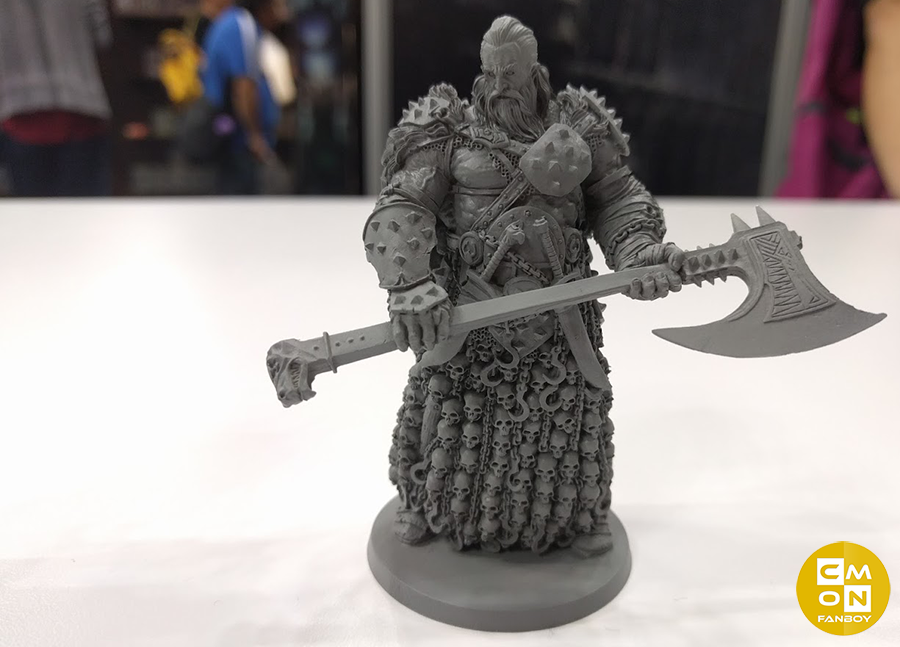
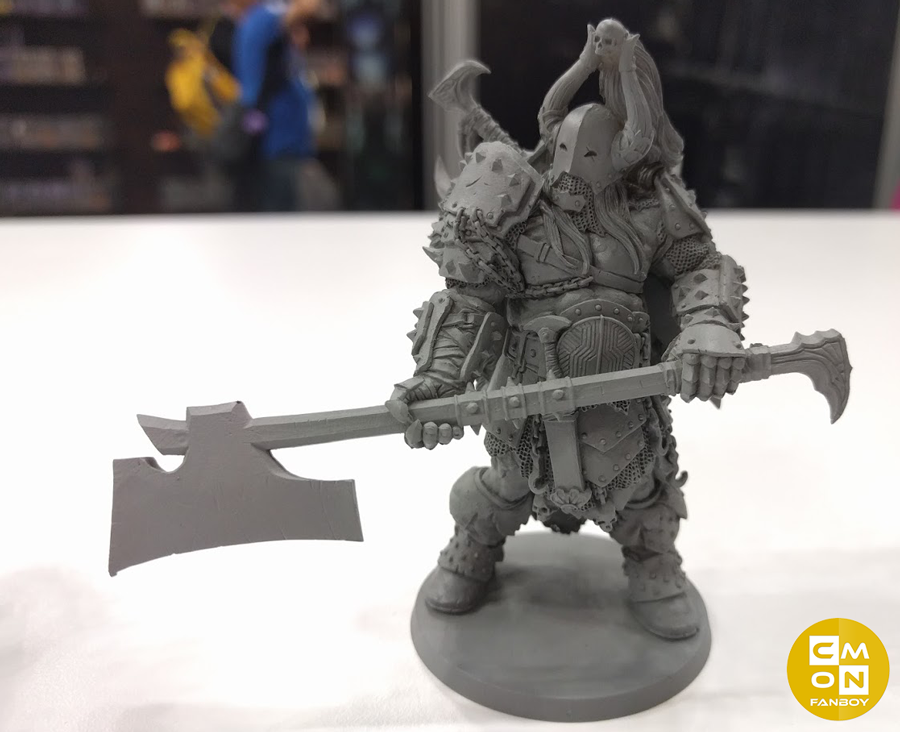

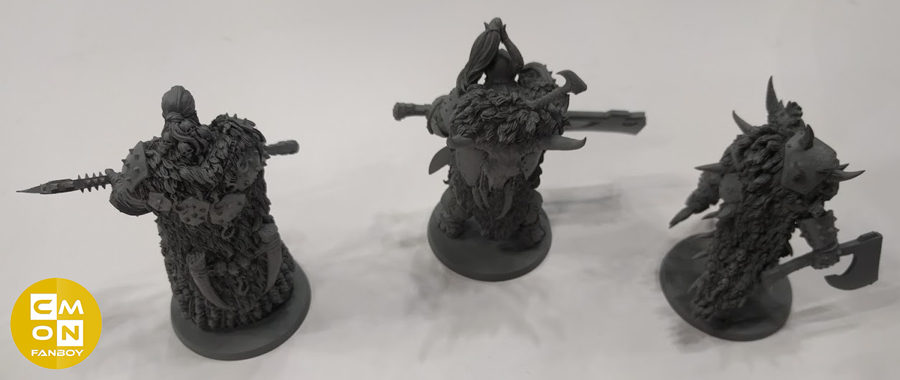
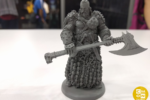
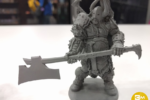
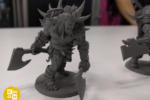

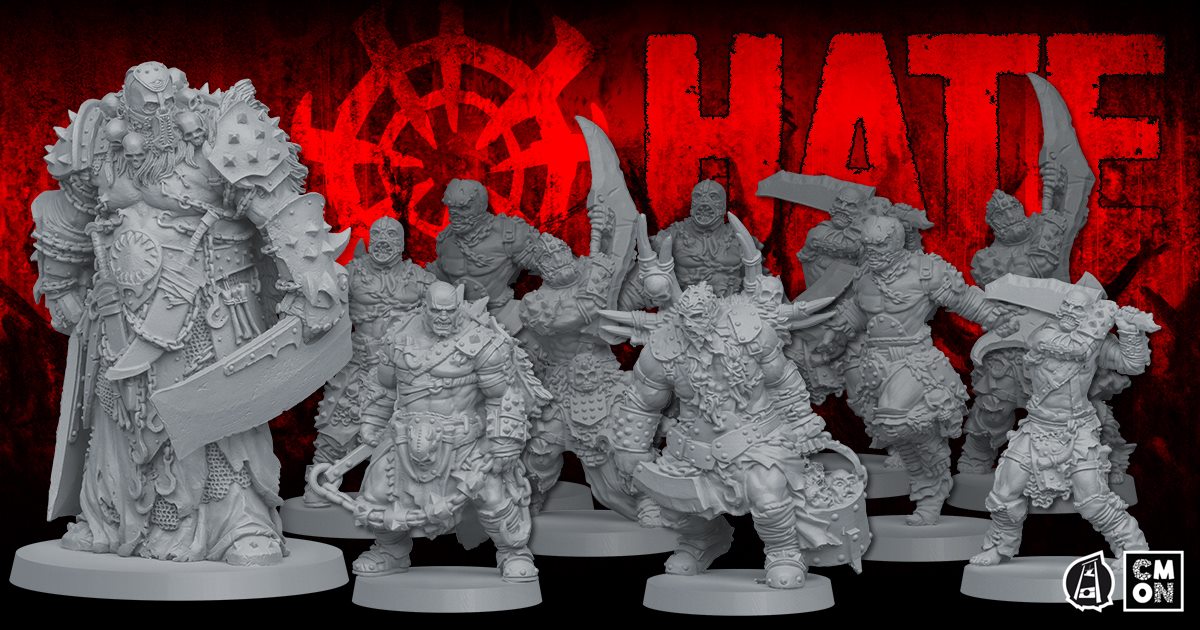

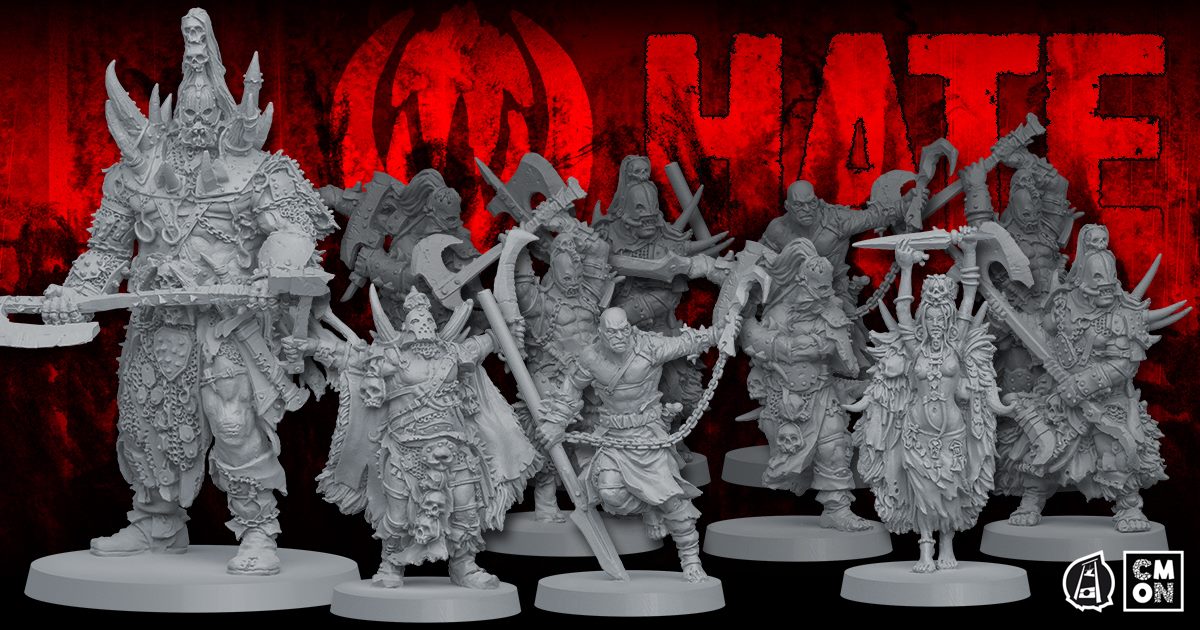
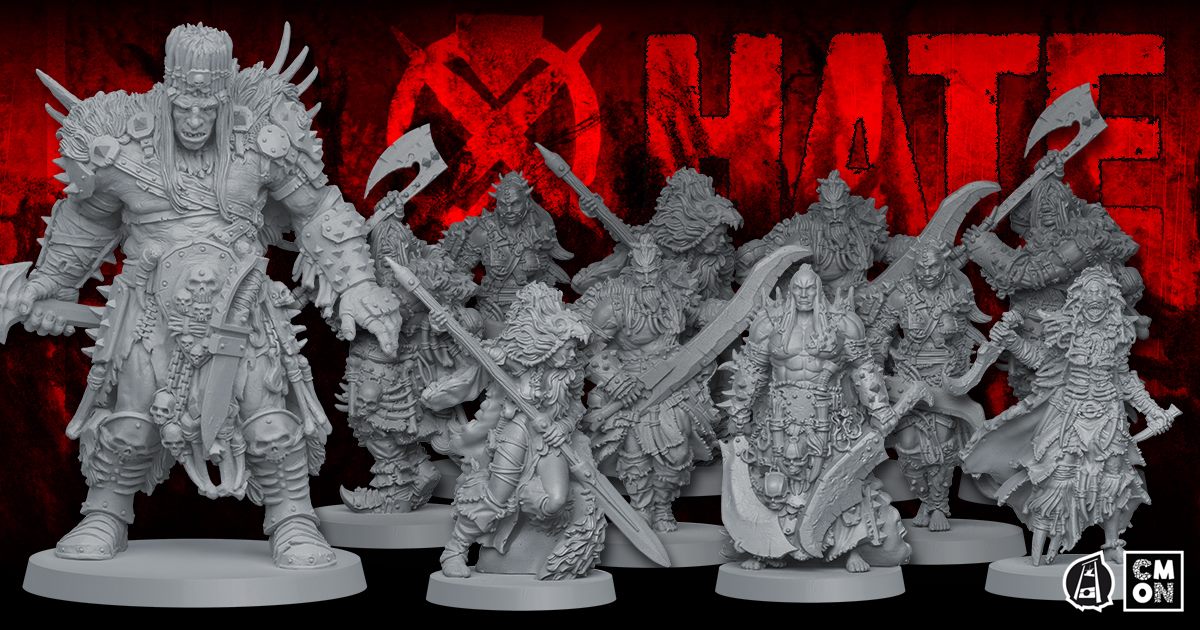

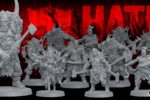


Pingback: A Chronicle of HATE | CMON Fanboy